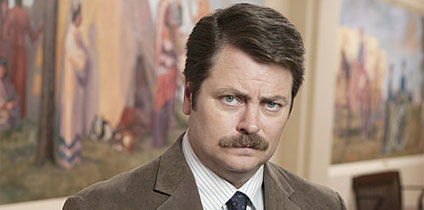More Shameless Self-Promotion
Hi all. As a small gift for you going into this weekend, here's a link to an article from The Numbers Guy at the Wall Street Journal. I was one of several people interviewed for my thoughts on the preponderance of math holidays that have been in the news recently. If you've been reading this blog for a while, you will already know my general feelings towards these holidays. More details, though, can be found here or here. If you're curious, you can probably find other articles in which I jump on the soapbox.
I'll be back next week with something more substantive. In the meantime, enjoy your weekend, and if you're in Los Angeles, Happy Carmageddon!
Some Readership Statistics
This week marks the third anniversary of Math Goes Pop! As such, I thought it might be appropriate to engage in a bit of navel-gazing. But since I can gaze at my own navel whenever I please, I'd like to flip the script, as it were, and turn my attention towards the collective navels of my readership.

Our cat's third birthday is also this week. It is unclear which event he is celebrating, although the dilated pupils suggest he is celebrating a bit too hard.
I'd like to share with you some data on the geographic distribution of my US readers. While there is a large California bias, people from all over the country seem to have stumbled upon this corner of the internet, and have hopefully enjoyed their time here.

This represents you, gentle reader. Darker green means more viewers.
Of course, a California bias shouldn't be all that surprising. After all, California is the most populous state in the country, accounting for roughly 12% of the country's total population, according...
Some Shameless Self-Promotion
Looking for a way to procrastinate before the three day weekend? Then feel free to check out this interview I gave to the Journal of Media Literacy Education. I gave the interview some time ago, but just happened to stumble upon it in published form this week. If you want some behind-the-scenes perspective into how this blog started, and my general philosophy behind writing it, this interview is a good place to start.
Hope the long weekend treats you well!
Second Annual Tau Day: Interview and Ideas!
Last year marked the dawn of a new era in mathematical holidays. Spearheaded by Dr. Michael Hartl, Tau Day (celebrated today, June 28th) is an attempt to draw awareness to what he sees as a fundamental error in the definition of the beloved circle constant $latex \pi$. In particular, he (and others) argue that the more natural choice of the circle constant should be $latex 2\pi$, which he affectionately dubs $latex \tau$. I outlined the reasons for this in a post last year, though if you have the time, I highly encourage you to read Hartl's Tau Manifesto.
This year, I thought it would be nice to talk with Dr. Hartl in more detail about his inspirations for Tau Day, and where he envisions it in the future. He was gracious enough to agree to a brief interview, which I humbly submit to you here.
*
Q: When did you first discover that $latex \pi$ was "wrong"? Did you have an intuition that something was amiss before reading Bob Palais's 2001 article in The Mathematical Intelligencer
MTV/Oscar Showdown
For many of us, summer is thought of as the time between Memorial Day and Labor Day. For folks of a younger generation, though, trendier bookends are provided by two MTV Award shows: The Movie Awards at the beginning of the summer, and the Video Music Awards at the end. Continuing this noble tradition, the 20th iteration of the MTV Movie Awards was broadcast this weekend. If you missed it, don't worry; I'm sure it will be shown another 300,000 or so times before the summer is out.
As a shining beacon of what is hip, MTV has a responsibility during its movie awards to highlight the most popular films of the year. This is in stark contrast to the priorities of higher brow award shows such as the Oscars, for which artistic achievement is placed on the highest pedestal. This is not to say that these two goals need be mutually exclusive; indeed, since the first MTV Movie Awards was broadcast in 1992, the "Best Film" has agreed with the Academy Award winning best film three times (1997...
Scoreboard Stats
A couple of weeks ago I noticed this article on the Yahoo Sports page, which highlighted a statistically rare event that occurred in the American League on Sunday, May 8th. On that day, 7 baseball games were played on the AL schedule, and in all of those games one team scored exactly 5 runs. The post then links to this article from the AP, which gives this rare event the following context:
It was the first time in 18 years that such a quirky thing happened with a full schedule. On Aug. 10, 1993, all seven NL games featured one team scoring precisely two runs, STATS LLC said.
The last time it occurred with five or more runs was July 20, 1955, when all four AL games had at least one team score exactly six, STATS LLC said.
When I read this article, some questions immediately came to mind: exactly how rare is it for one team in a collection of 7 baseball games to have a common score of 5? Also, if 7 teams in 7 games have the same score, which score are they most likely to share? Are...
Parks and Recreation(al Mathematics)
Continuing last week's trend of discussing mathematics in the context of NBC comedy, today I'd like to move from The Office to Parks and Recreation. More specifically, I'd like to discuss local government wunderkind/aspiring club owner Tom Haverford, whose unique charm I cherish almost as much as Ron Swanson's mustache.
In a recent episode, Tom Haverford waxed poetic on the slang he has invented to describe different types of food. A clip is currently on YouTube (though I don't know how long it will stay).
Here's a list of the slang Tom uses:
desserts = 'serts,
entrees = tre-tre's,
sandwiches = sammies, sandoozles, or adamsandlers,
cakes = big ole' cookies,
noodles = long-ass rice,
fried chicken = fry-fry chicky-chick,
chicken parm = chicky-chicky parm-parm,
chicken cacciatore = chicky catch,
eggs = pre-birds or future birds,
root beer = super water,
tortillas = bean blankies.
Some folks had the brilliant idea to build on this new parlance by creating...
Dunder Math-lin
This week, Steve Carell uttered what may well be his last "That's what she said" as Michael Scott, boss extraordinaire on the US version of The Office. Though the show will go on, Michael Scott has (spoiler alert) left Pennsylvania for Colorado and the love of his life. In preparation for this departure, the show has spent the last several episodes easing the audience through the transition.
From a mathematical standpoint, though, there are a couple of inconsistencies. Michael makes no secret of the fact that he has worked for the company for 19 years. His employees take this loyalty to heart, and in Michael Scott's penultimate episode, "Michael's Last Dundies," they surprise their boss with a song parody of the Rent song "Seasons of Love," which pays homage to such a long period of service. The song begins with a soulful rendition of the following lyrics, courtesy of Andy Bernard (Ed Helms):
9,986,000 minutes,
We actually sat down, and did the math
9,986,000 minutes,
That's how...
Rites of Love and Math...
...and boinking. This, perhaps, is what I would've named the independent film Rites of Love and Math in order to diffuse some of the pomp.
For those of you who have not heard, Rites of Love and Math is an independent film starring a mathematician, and is inspired by the 1966 Japanese short film Yukoku (which can be seen in its entirety here; the standard Wikipedia synopsis is here). This Japanese film depicts an army lieutenant who knows he will be ordered to execute his friends after a failed coup d'état; in order to avoid this fate, he and his wife commit ritual suicide together, after making sweet love one final time.
If you ask how something could be inspired both by this film and mathematics, Rites of Love and Math is your answer. This mathematical interpretation, which premiered at the Berkeley Film and Video Festival late last year, replaces the protagonist's military background with a mathematical one, but the same general story points are still hit. The mathematician engages...
A Certain Ambiguity
I recently read the 2007 novel A Certain Ambiguity, one of several mathematically-influenced gifts I received for Christmas. Written by Gaurav Suri and Hartosh Singh Bal, the novel explores the certainty of knowledge through the prisms of mathematics and religion. The story is told through from the perspective of a Stanford undergraduate, whose grandfather was a mathematician and who, it is discovered (spoiler alert!), was arrested in the early twentieth century under a blasphemy law in New Jersey for remarks he made against organized religion.
The grandson, Ravi Kapoor, delves into this mysterious part of his grandfather's past while taking a mathematics class analogue of "Physics for Poets" - in other words, a math class aimed at non-mathematics students. The story jumps between classroom discussions and fictionalized historical records in an attempt to make clear the beauty of mathematics and give insight into the quest for truth (including, but not limited to, mathematical truth...
Page 7 of 20


